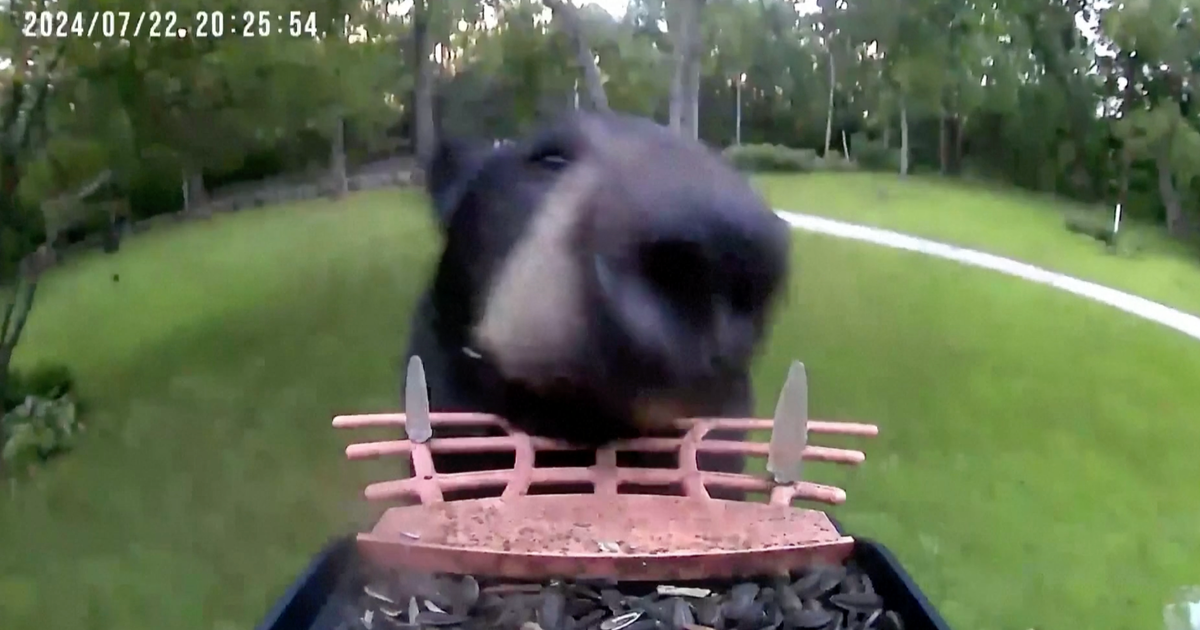"Lame ducks" and the tradition of presidential transitions
It's a harmless, almost funny-sounding term to describe the two-and-a-half-month stretch between the general election and an outgoing president's departure: "Lame duck."
"Lame duck, I gather, goes back to a time when they were British businessmen who had become bankrupt," said presidential historian Doris Kearns Goodwin. "It then got attached to politicians who weren't going to be in office very long."
The lame duck label migrated to American politics; it was used to describe outgoing President Calvin Coolidge. But as Goodwin points out, a lame duck still has wings. "They still have every power that they ever had before," she told correspondent Mo Rocca.
There's the power to issue headline-making pardons, and the power to help (or hinder) a smooth handoff to the next commander-in-chief.
"So many other countries do not have that peaceful transition of power," said Goodwin. "It's been the hallmark of our democracy since good ol' George Washington."
To many people, the 78 days between November 3 and January 20 are feeling like 78 years … which raises the question, why is this period so long?
Goodwin said, "Originally, the purpose of the waiting period was to give time for the new president to get from wherever they were to Washington, D.C., and that purpose seems to be less necessary today given modern transportation."
But 2020 isn't the first tumultuous transition. After Abraham Lincoln's election in November 1860, he had to wait four months (back then the Inauguration wasn't until March) before President James Buchanan vacated the premises. "I can't even imagine what it was like during the period of time between Buchanan and Lincoln," said Goodwin. "Lincoln's elected president. And then, within the matter of weeks after that, seven states secede from the Union."
During the Great Depression, as Franklin Delano Roosevelt waited to take the reins from lame duck Herbert Hoover, the country itself was on life support. "It's hard to imagine – I mean, Franklin Roosevelt really did not know in January and February and March whether the government could collapse before he even had a chance to put his own programs into use," Goodwin said.
Hoover had suffered a humiliating defeat, and according to Goodwin, the ride he shared with FDR to the Capitol on Inauguration Day 1933 was "very frosty."
"But Hoover did ride in the car?" Rocca asked.
"Absolutely. So, it may not have been, you know, the most friendly of transitions, but they were trying to work together."
And that ride is just one of the traditions we've come to expect during the transition season.
"Those rituals, few of them are mandated by law," Rocca said. "They're not in the Constitution – a concession speech, a congratulatory call."
"Absolutely. And these were just traditions that developed," Goodwin said. "When you think about it, the word 'transition period' just conjures up something bureaucratic. But it's really something more than that."
Goodwin said the concession speech has long been a vital step in consoling supporters, and helping them move on: "These people are filled with emotion. And he has to take them from that moment to that next moment of acceptance. That's a signal to the country, because there're supporters all over the country that have to make that same transition," she said.
Typically during this time, the outgoing president hosts the incoming one. "That's part of the healing. The outgoing president invites the family of the new president to come in and tour the mansion, it's gonna be the home of the new person. And all of those moments, those are visual and emotional signs to the country at large, to the supporters who are disappointed, who lost the election, to the new people coming in, that they're not gonna gloat. Because these two people are able to get together, then we can, too."
This presidential transition period has been bereft of all these rituals.
For only the fifth time in American history, the outgoing chief executive won't attend his successor's Inauguration.
"History's gonna look back at this transition period, even as it is now, I think, with very troubled eyes," Goodwin said. "And I think it's a real loss – for him, for his legacy, and for the country, most importantly."
For more info:
- doriskearnsgoodwin.com
- "Leadership in Turbulent Times" by Doris Kearns Goodwin (Simon & Schuster), in Hardcover, Trade Paperback, Audio and eBook formats, available via Amazon and Indiebound
Story produced by Michelle Kessel. Editor: Steven Tyler.
See also:
- Doris Kearns Goodwin would like Trump to learn from Lincoln, Roosevelt, LBJ: "They'll teach you something" ("CBS This Morning," 11/25/19)
- Doris Kearns Goodwin on whether we are living in "the worst of times" ("Sunday Morning," 10/7/18)
- An Election Night tradition: The concession speech ("Sunday Morning," 11/1/20)





